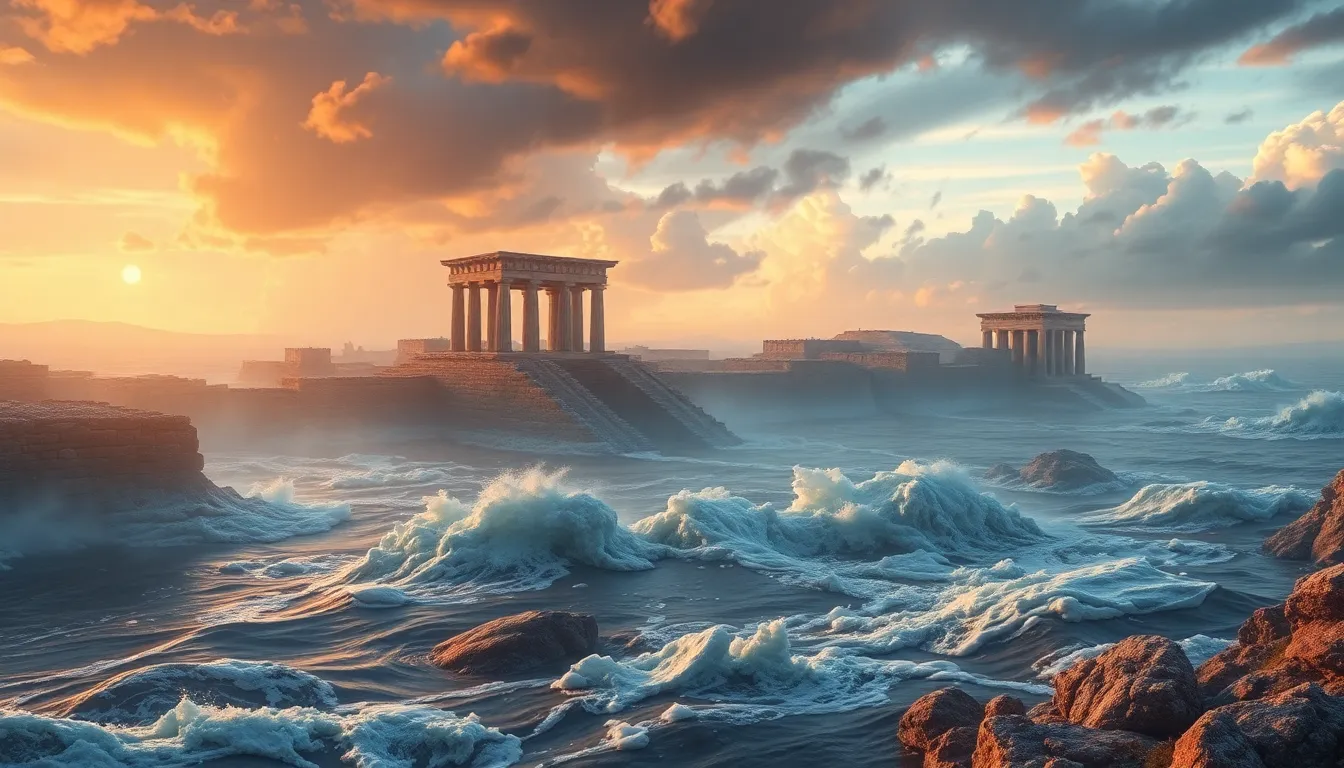The Floods of the Ancient World: Myths That Define Civilizations
Introduction: The Universality of Flood Myths
Throughout history, flood myths have emerged in various cultures across the globe, reflecting the universal human experience of natural disasters. From the Sumerians to the Hebrews, and from the Greeks to the Indigenous peoples of the Americas, these narratives serve as powerful symbols of destruction and renewal. The prevalence of flood myths highlights not only the shared fears associated with water’s overwhelming power but also the resilience of human beings in the face of catastrophe.
These myths play a crucial role in shaping cultural identity, serving as moral and ethical compasses for societies. They encapsulate values such as community, survival, and the relationship between humanity and the divine, offering insights into the collective psyche of civilizations.
The Historical Context of Floods in Ancient Civilizations
Geographical and climatic factors have historically contributed to the frequency of floods in ancient civilizations. Many early settlements arose in fertile river valleys, where agriculture thrived. However, the same rivers that provided sustenance could also become destructive forces during seasonal floods.
Some notable ancient floods include:
- The flooding of the Tigris and Euphrates rivers in Mesopotamia.
- The Nile’s annual inundation in Egypt.
- Seasonal monsoons affecting the Indus Valley civilization.
These floods often led to significant societal changes, including shifts in population, changes in agricultural practices, and the emergence of new religious beliefs centered on appeasing deities associated with water and storms.
The Epic of Gilgamesh: The Sumerian Flood Narrative
One of the earliest known flood narratives is found in the Epic of Gilgamesh, a cornerstone of Sumerian literature. In this epic, the character Utnapishtim is warned by the god Ea of an impending flood meant to destroy humanity. He constructs a large boat to save himself, his family, and a collection of animals.
The symbolism of the flood in this narrative serves multiple purposes:
- Divine Retribution: The flood is portrayed as a punishment for humanity’s misdeeds, reflecting the belief in a capricious divine authority.
- Rebirth: It emphasizes themes of regeneration, as the world is cleansed and a new beginning is offered to the survivors.
This Sumerian myth has influenced many subsequent flood stories, illustrating the cultural importance of aquatic disasters in the ancient world.
Noah’s Ark: The Biblical Account of the Great Flood
The biblical account of the Great Flood in the Book of Genesis mirrors and expands upon earlier flood narratives. Noah, chosen by God for his righteousness, builds an ark to save his family and pairs of every animal species.
Key elements of the Noah’s Ark story include:
- Divine Covenant: After the flood, God establishes a covenant with Noah, symbolized by the rainbow, promising never to destroy the earth by flood again.
- Human Responsibility: The narrative emphasizes the need for moral living and stewardship of the earth.
While there are notable similarities between the Genesis account and other flood myths, such as the Epic of Gilgamesh, the theological implications diverge significantly, emphasizing a relationship of promise and moral obligation.
The Hindu Myth of Manu: Creation and Destruction
In Hindu tradition, the flood myth centers around the figure of Manu, who is warned by the god Vishnu that a great flood will cleanse the world of evil. Manu builds a boat and survives the flood, ultimately repopulating the earth.
This myth conveys important moral lessons:
- Preservation: The act of saving life during the flood signifies the importance of conservation and respect for all living beings.
- Regeneration: The rebirth of civilization post-flood reflects the cyclical nature of life and the belief in a continuous process of creation and destruction.
The Greek Myth of Deucalion: Survival and Renewal
The Greek myth of Deucalion and Pyrrha tells of a flood sent by Zeus to punish humanity for its wickedness. Deucalion, the son of Prometheus, builds an ark to survive the deluge. After the waters recede, he and Pyrrha repopulate the earth by throwing stones over their shoulders, which transform into people.
This myth emphasizes:
- Human Resilience: The survival of Deucalion and Pyrrha underscores the strength and determination of humanity to rebuild after disaster.
- Rebirth of Civilization: The act of repopulation symbolizes hope and renewal, suggesting that from destruction, new life can emerge.
Indigenous Flood Narratives: Wisdom of the Ancients
Many Indigenous cultures possess rich flood narratives that reflect their unique worldviews and environmental understandings. For instance, Native American tribes have stories of floods that serve as cautionary tales about disrespecting nature.
Aboriginal Australian stories similarly convey profound spiritual lessons, emphasizing the interconnectedness of humans and the land.
Common themes in these narratives include:
- Respect for Nature: These stories often highlight the consequences of human actions on the environment.
- Spiritual Connection: Flood myths serve as reminders of the spiritual relationship between people and the world around them.
Archaeological Evidence and the Search for Historical Floods
Archaeological findings have provided intriguing evidence supporting the potential historical basis of flood myths. For example, sediment layers in the Tigris-Euphrates valley suggest catastrophic flooding events that could have inspired the Sumerian narrative.
Theories connecting flood myths with real historical events include:
- Evidence of large-scale flooding in the Black Sea region.
- Geological studies indicating significant flooding in the Nile Delta.
Such findings lend credence to the idea that these myths may have origins in actual events, reinforcing their significance in human history.
Cultural Significance and Legacy of Flood Myths
The legacy of flood myths continues to influence art, literature, and modern storytelling. From classic literature to contemporary films, these narratives shape our understanding of human experiences with nature and morality.
Flood myths also play a role in shaping cultural values and collective memory, serving as cautionary tales about hubris and the importance of living in harmony with the natural world.
Conclusion: Lessons from the Floods of the Ancient World
The floods of the ancient world, as depicted in various myths, offer timeless lessons relevant to contemporary society. They remind us of the power of nature and the need for humility, respect, and resilience in the face of adversity.
As we confront modern environmental challenges, these ancient narratives can inform discussions about sustainability and the human capacity for renewal. The wisdom embedded in these stories continues to resonate, urging us to reflect on our relationship with the world and each other.




